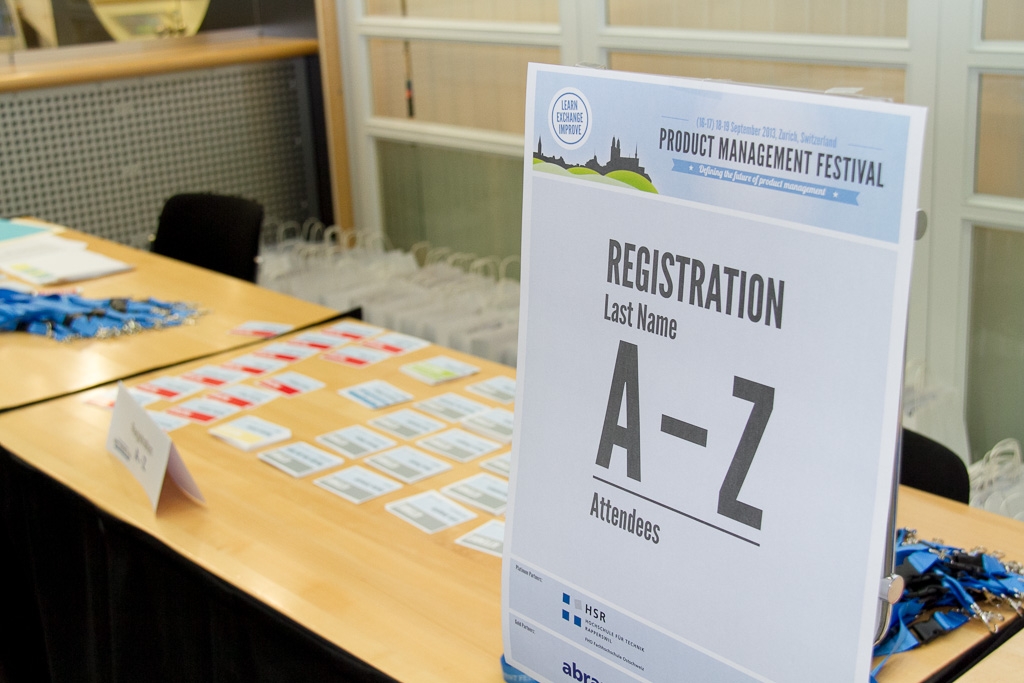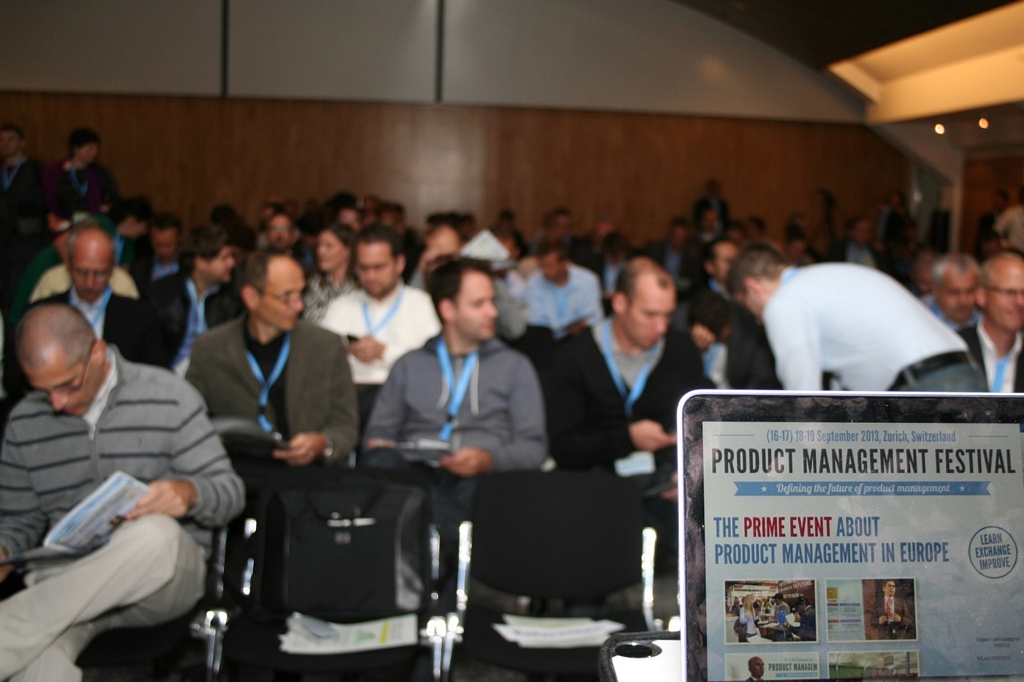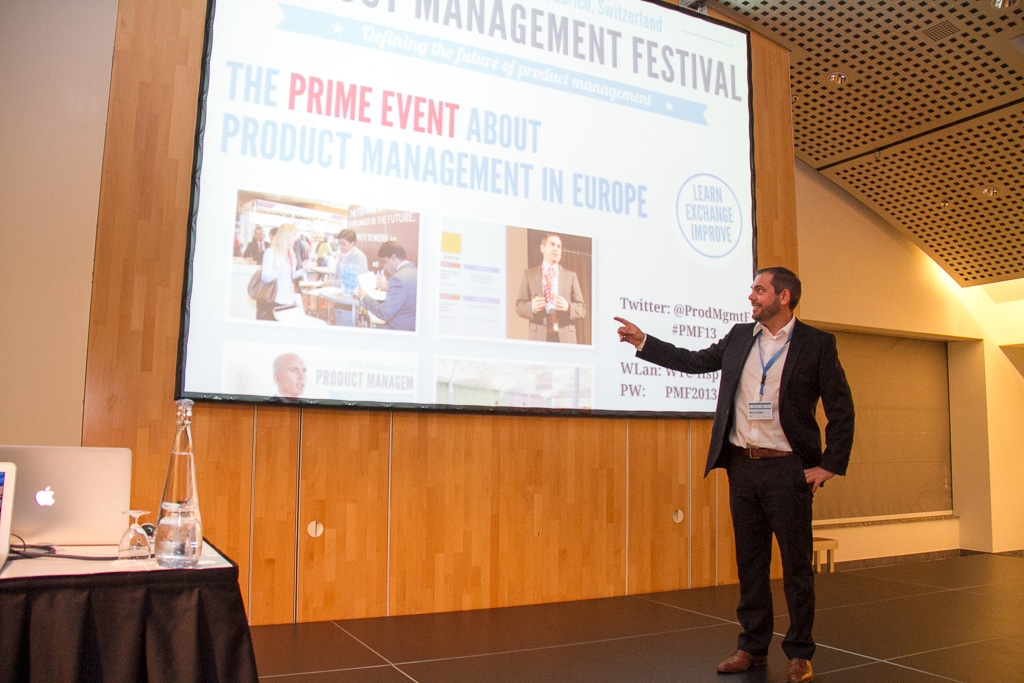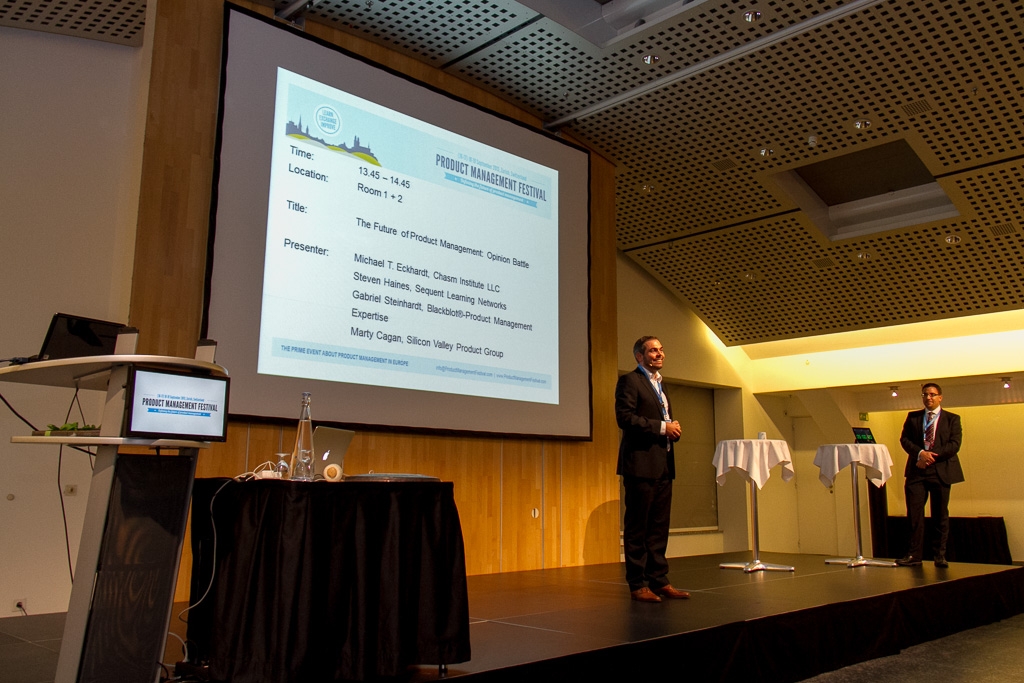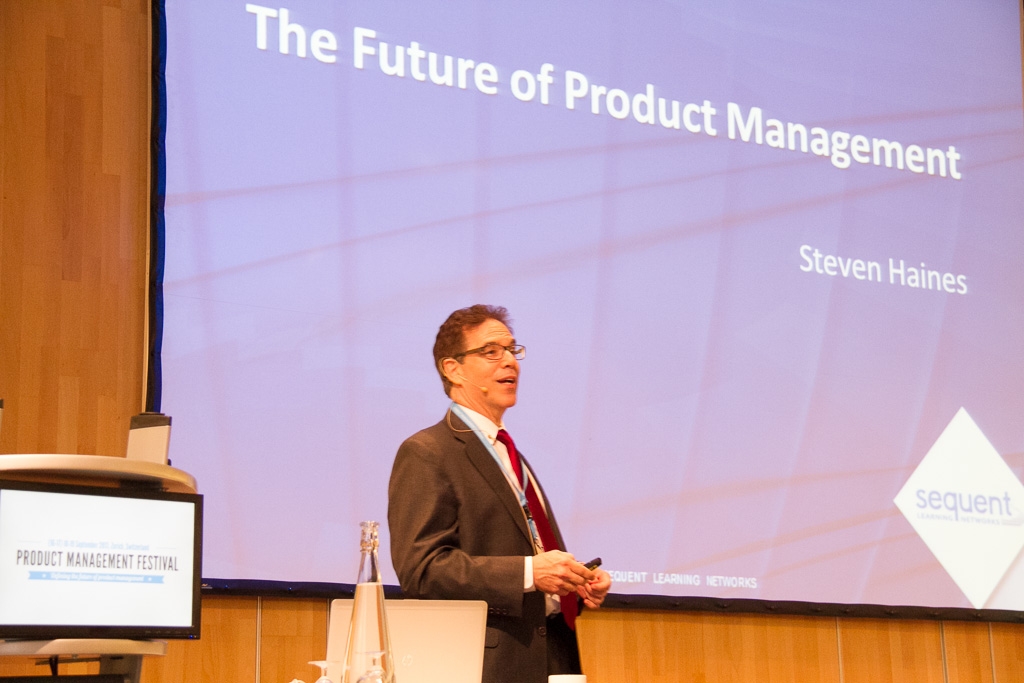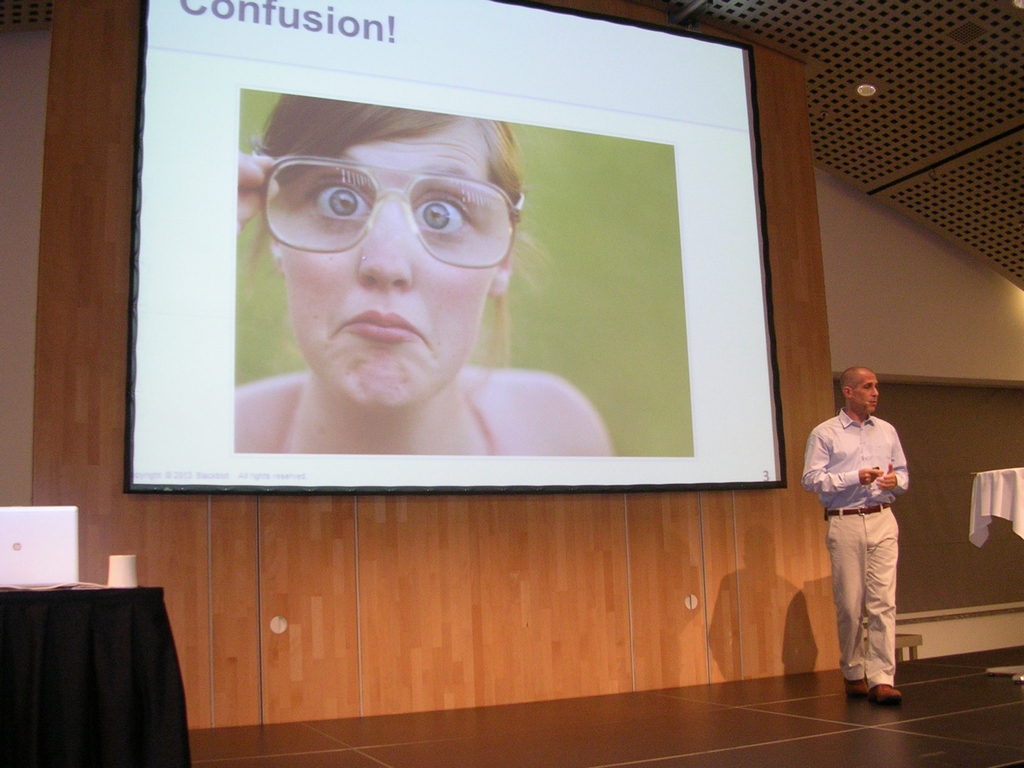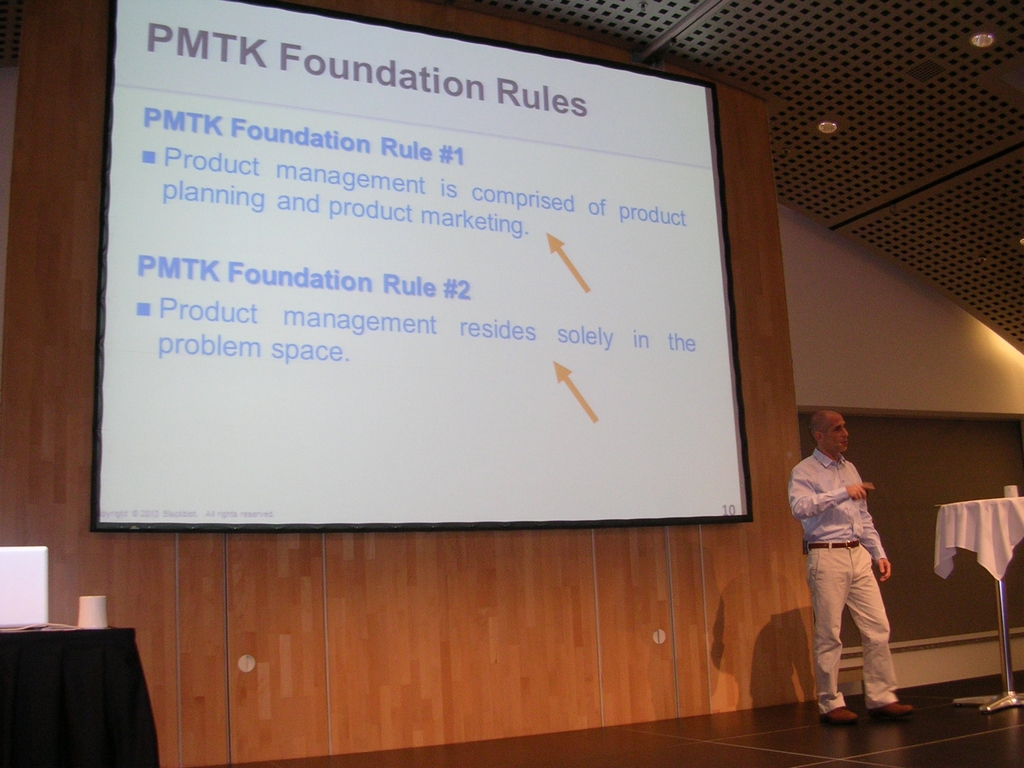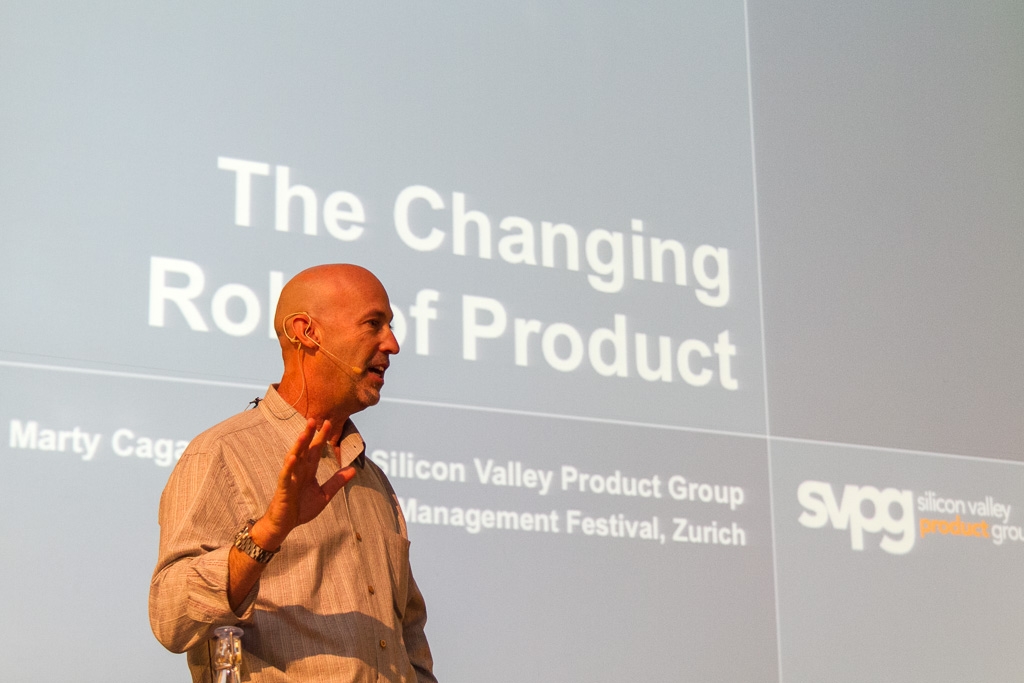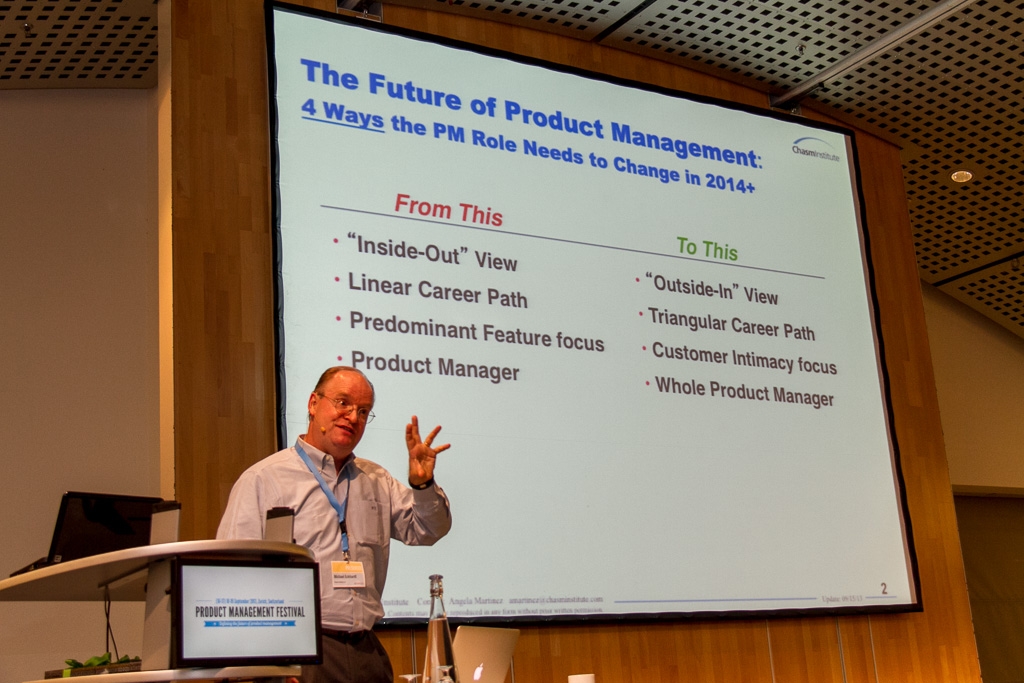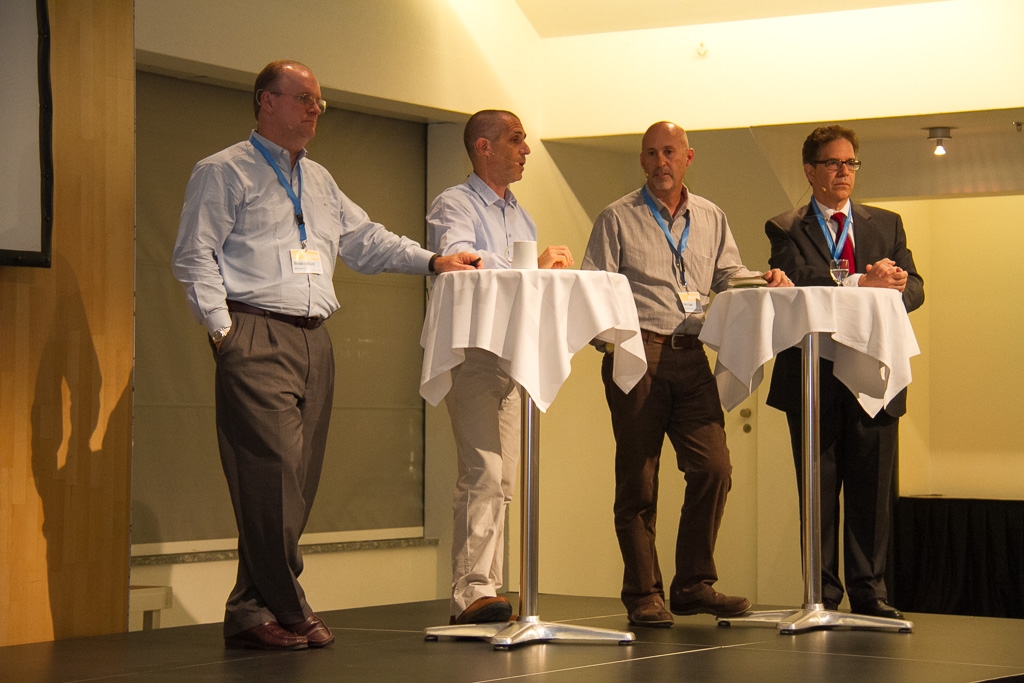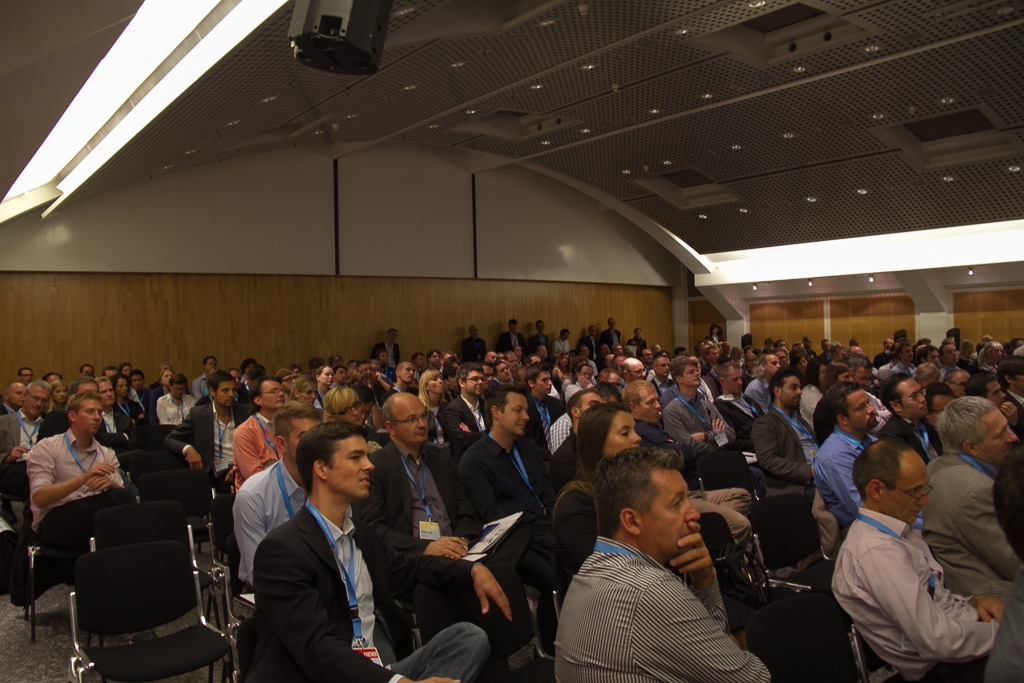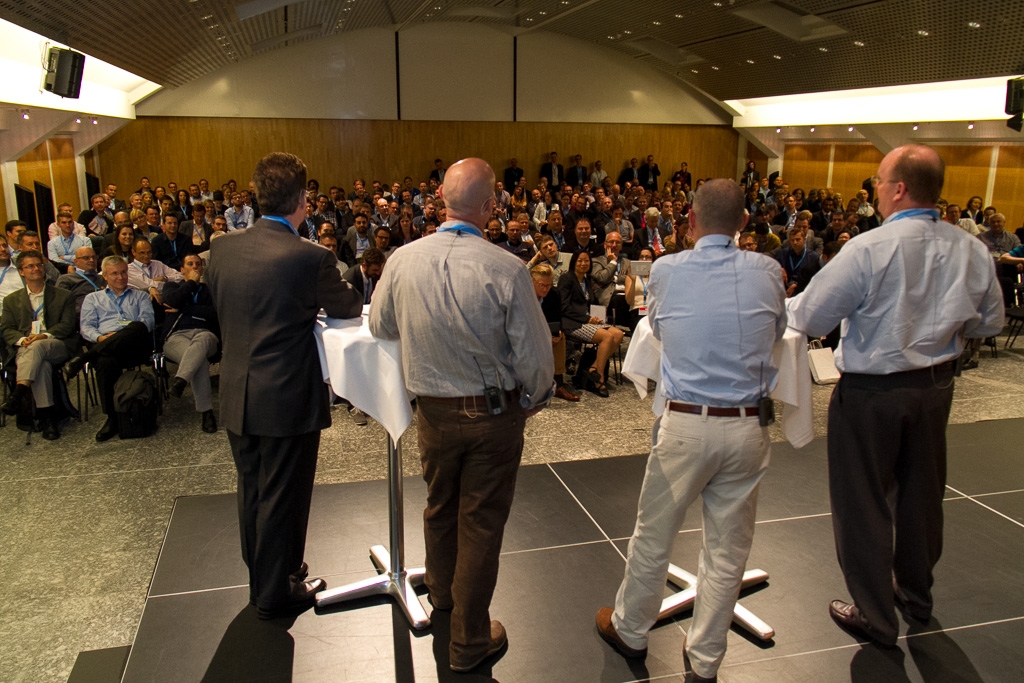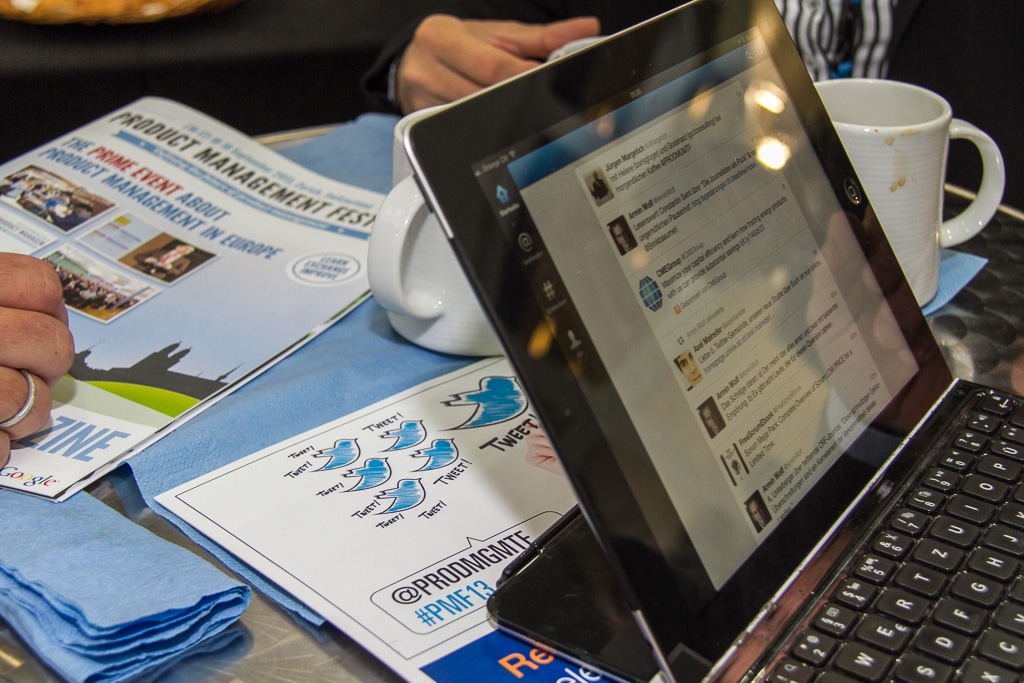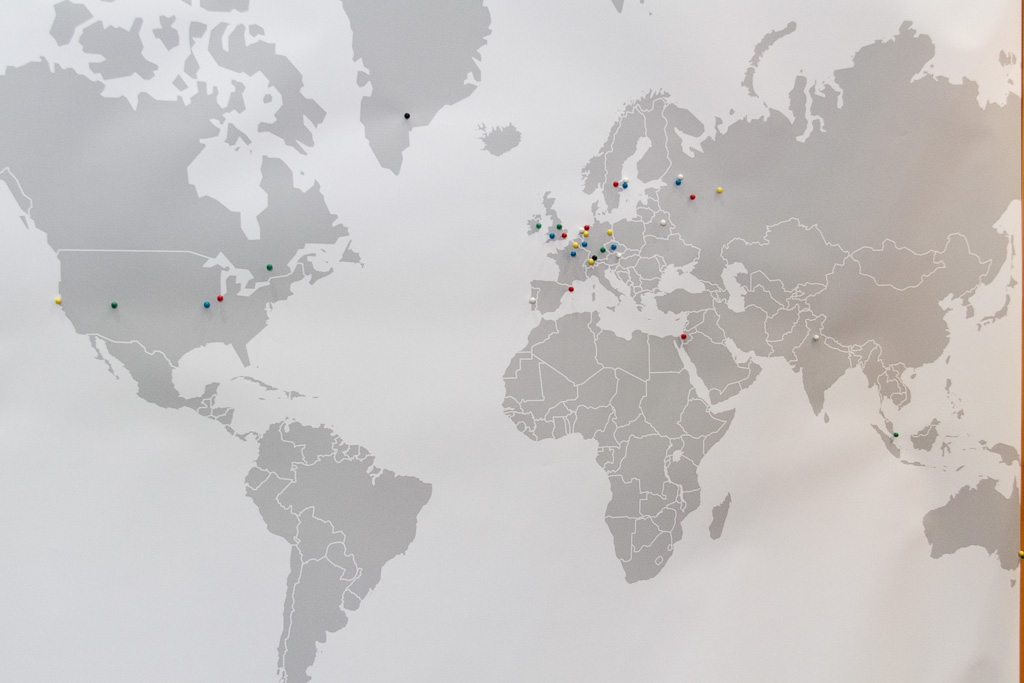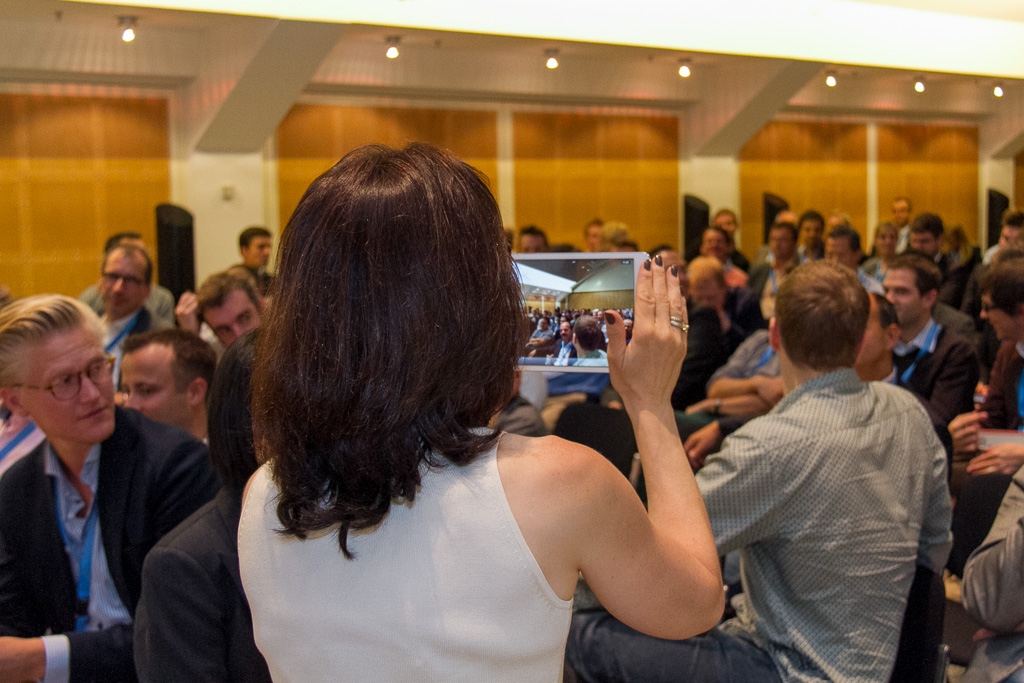Product Management Festival 2013
In "Trading Places", one of the better films critiquing Wall Street and modern society, Colman (Denholm Elliott) the butler advises Valentine (Eddie Murphy) in preparation for his work debut to "Just be yourself, Sir, whatever happens…" At Blackblot we always put forward our dogma according to the Blackblot Product Manager's Toolkit® (PMTK) methodology no matter what happens. This forthright approach often creates interesting situations and this was the case with Blackblot's attendance at the Product Management Festival 2013.
The Product Management Festival 2013 which took place in Zurich, Switzerland, during September 2013, was the first major product management conference to take place in Europe. It was a two-day event with nearly three hundred participants from many western and eastern European countries, Russia, USA, Israel and even Australia.
The conference was initiated and efficiently organized by SwissQ. As someone who would have a hard time organizing a birthday party, I am highly appreciative of the event management staff who did a superb job. The enormity of the event with so many concurrent functions taking place (registration, marketing, social media, catering, security, etc.) was impressive.
Prior to the conference's main event, I delivered a one-day concise requirements tutorial. This was an intensive session in which the attendees learnt how to write market and product requirements according to the Blackblot Procedural Requirements Management™ methodology.
On the first day of the conference I participated in a mini keynote presentation and panel event that was comprised of four notable book authors and public speakers in product management. The other panelists were Marty Cagan, Steven Haines and Michael Eckhardt. Each panelist had exactly five minutes to present his perspective on the future of product management, with or without presentation slides, after which there was a panel discussion and questions from the audience.
It was evident from the outset of the presentations that the panelists differed in their presentation style and particularly in their perspective on the essence, let alone the future, of product management.
At Blackblot we routinely monitor trends in the product management profession. The most recent figures show that each month there are nearly 670,000 combined Google searches by people trying to understand "What is a product manager?" and "What is product management?". I foresee this number rising during 2014 to one million combined Google searches per month.
Accordingly, while preparing my mini keynote presentation in the weeks preceding the conference, I was under a growing realization that it would be difficult to have a conversation about the future of product management when there is such a massive lack of clarity on what product management is.
Any topic or question about product management hinges on the definition of product management. So my mini keynote presentation on the Future of Product Management (PDF) was based on the premise that we must first define what product management is.
The audience was rather enthusiastic about the clear and definitive foundation rules of PMTK and the underlying rationale that is based on the separation of the problem space and the solution space. From later conversations, it was also clear that these concepts were new to many practitioners and not implemented at their companies.
In the ensuing panel discussion I submitted PMTK's methodological position that Product Management is an occupational domain that contains the Product Marketing and Product Planning disciplines, both of which reside solely in the problem space. I explained that Product Manager is a job title, not a role.
Marty Cagan from the Silicon Valley Product Group took the opposing side and argued that Product Manager is a role that spans tasks in both the problem and solution spaces, and is responsible for business and product definition considerations including Agile product ownership responsibilities.
In response to a question from the audience about Agile, I reiterated that Agile is a product development method which belongs in the solution space and is unrelated to product management. This had many in the audience laughing but there were also some nervous laughs. Solid arguments when backed by a methodology, not mere personal opinion, cause people to rethink their situation and question things they have been told or conditioned to accept.
The adoption of Agile product development methods was a dominant theme at the conference. There is a reason why at a product management convention there was much discussion about a product development method. It is a bit of a paradox but easily explained.
Previously, and in many technology companies, the Product Manager job title mostly represented the Product Planner and Product Architect roles. The Product Manager wrote both market and product requirements that were respectively articulated in the Market Requirements Document (MRD) and the Product Requirements Document (PRD). Due to the shifting and at times erroneous applications of Agile product development methods, the MRD and PRD documents were thoroughly abolished in favor of an Agile Scrum Product Backlog document. By this substitution of documentation, the resulting and growing trend now has the Product Manager job title confusingly representing the Agile Product Owner, Product Architect, and Agile Project Manager roles and much more. The erroneous applications of Agile product development methods and the forced and misconceived joining of roles in product management (problem space) and Agile product development (solution space) have created an identity crisis for both Product Managers and Agile Product Owners. This twisted state of responsibilities needs to be sorted out. In the near future, Blackblot will be making a foray into the Agile world, not with regard to the execution and application of Agile practices, but for the purpose of providing clear interfaces between Market-driven Product Management and Agile Product Development.
In other news, my colleague, Leon Malalel, Senior Instructor and Consultant at Blackblot, later on the first day of the conference, delivered a presentation about Building Product Management Teams (PDF). This presentation was built upon and reflected our experience in a yearlong customer engagement in which Blackblot built, trained and equipped the customer's product management team. Nearly a third of the conference's attendees attended Leon's presentation. Many people later commented on its refreshing practicality.
The feedback to Leon's presentation highlights differences in presentation concepts. Many of the sessions I attended during the conference were practical and educational, the instructors very professional and the discussions enlightening. But some presentations were of the inspirational and motivational fare in which slogans such as "Talk to your customers" and "Listen to your developers" (or was it "Listen to your customers" and "Talk to your developers"?) are advocated and listed on the screen. At times I feel that this approach is far too rudimentary to be useful, but it can be entertaining and that is occasionally needed at a conference.
On the second day of the conference there were some interesting presentations on a variety of career, research, and development topics. In the afternoon I delivered a presentation entitled Product Management Myths – Debunked! (PDF). This was a light session in which the most common misconceptions of product management were introduced, explained and debunked. The audience was rather quiet but not indifferent to the content. In the Q&A session some challenging and very thoughtful questions were asked about the logic of the arguments I made and how they were derived.
After the presentation I spoke with several people, and questions on how to cope and adapt in a company making the transition to Agile were raised. The discussion focused on how Agile still needs to go through a clarification and consolidation phase and how practitioners should deal with this situation. Several people highlighted that their lack of role clarity and overwhelming responsibilities were troubling them, and they were very explicit about this. The discussions vividly reminded me of my experience at the Agile on The Beach 2013 conference.
Overall, it was an honor to be part of the Product Management Festival 2013 conference in Zurich. I learned a lot, the mini keynote presentation and panel discussion went well, Blackblot's presentations and tutorial were successful, event management was superb, and the people smart and friendly. I look forward to more such events.
